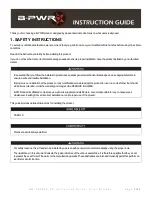
Art. No. DS 4092 TS
4.2.4.5 Acoustic signal encoder
The device has an acoustic buzzer (Piezo signal transmitter) that can be used for
acknowledgement or status signalling. Additionally, the integrated buzzer can signal a warning
or ring tone, an alarm and an active programming mode. Since the buzzer can signal different
states that can also occur simultaneously, a signalling priority must be set (see table below). A
signal with higher priority overrides a signal with lower priority.
Signalling state
Priority
Type of signalling
Programming mode
1 (highest) pulsing tone (0.5 Hz)
Signalling of an alarm
2
pulsing tone (2 Hz)
Ring tone/warning tone
3
Single tone with adjustable signal duration
Signal on actuation *
4 (lowest)
Single tone with adjustable signal duration
Signal on telegram acknowledgment * 4 (lowest)
Single tone (250 ms)
Signal on saving a scene *
4 (lowest)
Single tone (2 s)
Signal on value adjustment *
4 (lowest)
Single tone (250 ms)
Signal on status signal via object *
4 (lowest)
Single tone or pulsating tone (1 Hz)
Signal priorities of the internal buzzer
The function-dependent signals (*) have the lowest priority. These signalling functions are
configured in the ETS (alternatively: acknowledgement signalling, telegram acknowledgement,
status signalling) and executed additionally by operating functions (signal on saving a scene,
signal on value adjustment). The signals of the operating functions are only executed, however,
if the signalling function of the buzzer is configured in the ETS to "acknowledgement signalling".
The buzzer then reacts similarly to operations of the rotary knob or push-button.
The function-dependent signals have the same priority to one another, which means that the
event that most recently occurred determines the signalling behaviour of the buzzer if no
signalling with higher priority (1...3) is active.
i
On activation of the energy saving mode, the acoustic signal transmitter of the device is
switched off under forced control. An acoustic signal with low or medium priority, which was
active before the energy saving mode and aborted or should be activated during the energy
saving mode, is not executed again or recovered automatically on deactivation of the
energy saving mode. The buzzer must first be reactivated before it executes an acoustic
signal again.
Exception: The device will not activate the energy saving mode while an alarm function
(high priority) is signalled by the buzzer! If the device should activate the energy saving
mode during an active alarm message, the execution of the energy saving mode will be
delayed until the end of the alarm message. The device ignores telegrams for activation of
the alarm function, however, if the energy saving mode was already activated previously.
Thus, an object update of the alarm function during the energy saving mode will not cause
the alarm function to be executed. Just like in the case of signalling with a lower priority, an
alarm function that was active before the energy saving mode and aborted or should be
activated during the energy saving mode, is not executed again or recovered automatically
on deactivation of the energy saving mode. Here, too, the alarm object must first be
reactivated.
i
The programming mode overrides the signalling of an alarm, among other things. On
deactivation of the programming mode by the programming button, an alarm message that
is still active will no longer be signalled. To repeat or restart the alarm, the alarm must first
be switched off here and then reactivated.
Page 86 of 143
Software "Rotary sensor with extensions 10FE1x"
Functional description
















































